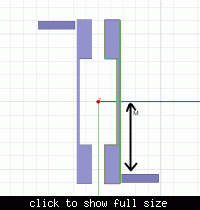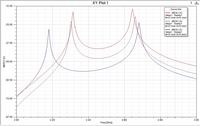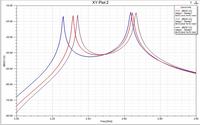ermai
Member level 1
I have used method mentioned from this article
"Narrow-Band Microwave Filter Design by Daniel G. Swanson, Jr"
**broken link removed**
The model for extraction of coupling coefficient is as the following picture:
ImageShack® - Online Photo and Video Hosting
But I am confused that the two peaks of S12 are depended on the width of gap between probe and resonator and the position of the probe along the resonator,
how do I know how the gap and position is to get the accurate coupling coefficient?
"Narrow-Band Microwave Filter Design by Daniel G. Swanson, Jr"
**broken link removed**
The model for extraction of coupling coefficient is as the following picture:
ImageShack® - Online Photo and Video Hosting
But I am confused that the two peaks of S12 are depended on the width of gap between probe and resonator and the position of the probe along the resonator,
how do I know how the gap and position is to get the accurate coupling coefficient?


